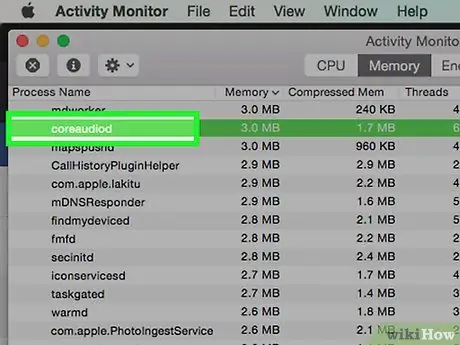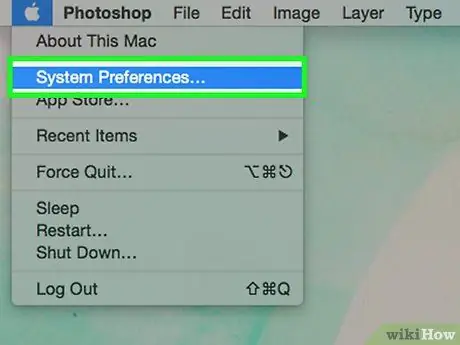- Author Jason Gerald [email protected].
- Public 2024-01-19 22:11.
- Last modified 2025-01-23 12:04.
If your Mac has problems playing sound, or you're having trouble choosing a device to play sound on, you can try to fix it yourself before taking your Mac to a service center. Generally, you just need to unplug and plug your headphones back in to fix sound problems on your Mac. You can also reset the PRAM on your Mac, which can help "cure" sound issues. To resolve sound issues caused by system errors, upgrade OS X to the latest version.
Step
Method 1 of 4: Basic Repair

Step 1. Restart your Mac first before trying any other repair steps
Sometimes, restarting your Mac can fix sound issues, or other common issues.

Step 2. If you can't click the volume control, or if the red light from the headphone connector is on, connect headphones, then disconnect
Repeat this step several times. This tip is known to be quite successful for recovering sound from Mac.
- Note: The above damage is a characteristic of hardware failure. You may need to connect and unplug headphones many times to restore sound. To have this issue resolved completely, take your Mac to a service center.
- Some users report that the sound problem will be resolved after connecting Apple-made headphones or earbuds.

Step 3. Download all available updates for your Mac
Sound issues on Mac might be resolved after installing the update. Click the Apple menu, then select Software Update to find and install updates.

Step 4. Open Activity Monitor, then stop the coreaudiod process
The sound controller on the Mac will restart.
- Open Activity Monitor from the Utilities folder.
- Find the coreaudiod process. To sort the process names alphabetically, click Process Name.
- Click the Quit Process button. After confirming the action, coreaudiod will restart automatically.
Method 2 of 4: Checking Device

Step 1. Make sure no headphones are connected to the Mac
If you connect headphones, the sound from the loudspeaker will not come out. Sometimes, to turn the speakers back on, you have to connect and disconnect headphones.

Step 2. Click the Apple menu, then select System Preferences
If you connect multiple audio devices to your Mac, the correct audio device might not be automatically selected.

Step 3. Click Sounds, then click the Output tab to display all the devices that can output sound on your Mac

Step 4. Select the right audio output device from the list
- If you want to play sound from the Mac speakers, select Internal Speakers or Digital Out.
- If you want to play sound from a connected TV, select HDMI.

Step 5. Check the sound volume of the device
External speakers generally have their own volume control. If the speaker volume is low or muted, the sound cannot come out even if you select the speaker from the list.
Method 3 of 4: Resetting PRAM

Step 1. Shut down your Mac
Resetting the PRAM can help with volume and sound issues. Even if you need to reset some settings on your Mac, your data is still safe.

Step 2. Turn on the Mac, then immediately press and hold Command+⌥ Option+P+R until the Mac restarts

Step 3. Release the buttons when the Mac beeps
The computer will start as usual. The computer startup process may take a little longer.

Step 4. Check the sound and other settings
Try playing the sound and adjusting the volume to make sure the sound problem is resolved. The clock on your Mac may reset too, so you may need to reset the clock to the correct time.
Method 4 of 4: Updating OS X Version

Step 1. Check if your Mac is using the latest version of OS X
OS X Mavericks (10.9) has many sound-related issues, which are generally resolved on OS X Yosemite (10.10). OS X El Capitan (10.11) fixes even more issues on Mac.

Step 2. Open the Mac App Store
Mac updates can be downloaded for free through the Mac App Store.

Step 3. Click the Updates tab
If a system update is available, you will see it in this tab.

Step 4. Download the latest version of OS X if you see it in the Updates tab
The download process may take a while.

Step 5. Install the system update by following the on-screen guide
You can install system updates easily, and your data will not be lost.







